Secret Art of Survival: Creativity and ingenuity of British Far East prisoners of war, 1942 - 45
KS2 and KS3 Teaching Resource (Accessible version)
Although there is a Secret Art of Survival Teacher Resource Pack that you can download and print, this page uses plain text and JPEG images in a more accessible format.
Introduction to the resource
This resource explores a hidden history of the Second World War, centred on the war across Asia, as Japan brutally expanded its empire throughout the region. This resource has been created by the Secret Art of Survival project, which is the latest element of the Captive Memories FEPOW (Far East prisoners of war) history programme. The project is a collaboration between the Liverpool School of Tropical Medicine who have been treating and working with FEPOW survivors since 1945, and the Victoria Gallery and Museum who have curated the Secret Art of Survival exhibition. The Secret Art of Survival exhibition provides a unique and fascinating glimpse of the battle to survive extreme adversity in wartime and the self-help strategies used by British servicemen, including making art to record their lives and as therapy.
During the Second World War thousands of Allied servicemen became prisoners of the Japanese. Japanese military philosophy held that anyone surrendering was beneath contempt. As a result, their treatment of captives was harsh. Working as slave labourers on a starvation diet, many died. Brutal punishments were handed out for the most minor breach of camp rules. FEPOW hurriedly documented daily existence in pencil, pen and ink, wherever they found themselves, in large transit camps, industrial work camps, jungle clearings or on tropical islands. FEPOW artists captured both the beauty and the horror of the landscapes.
FEPOW who were doctors, chemists and engineers before the war improvised medical equipment and drugs denied to them by the Japanese. A number of FEPOW artists charted the doctors’ battle to keep men alive: from ingenious life-saving inventions made from bamboo, tin, rubber and scrap to full operating theatres and dental surgeries in jungle camps. Others documented how faith and hope played a vital role, drawing and painting the small bamboo churches and concrete chapels and loved ones at home. Making each other laugh was crucial to morale and survival and is evidenced in the many cartoons drawn and performances produced.
How to use the resource
The activities have been inspired by the real-life stories of FEPOW featured in the Secret Art of Survival exhibition. The ‘secret’ in the title has two elements; firstly, it was forbidden to document anything in the camps and punishment was severe. Secondly, most of the work in this exhibition remained secret for many years, as even when it was brought back home it was hidden away as the men found it difficult to share the memories it evoked.
Each activity includes instructions, equipment needed, worksheets and additional information and National Curriculum and skills links.
The activities have been designed for KS2 and KS3 students but can easily be adapted for older/younger students.
FEPOW Fact Sheet
During the Second World War, 50,000 British servicemen became Far East prisoners of war (FEPOW), having been captured by the Japanese between December 1941 and March 1942, in places as far apart as Hong Kong, Singapore and the islands of Java and Sumatra in what was then known as the Dutch East Indies (now Indonesia). Many British servicemen were conscripts or volunteers and took their civilian skills into captivity.
The Japanese attack on Pearl Harbour in December 1941 was part of Japan’s military government’s expansionist policy to rid the Far East of western colonial rule. Seizing British, Dutch and American colonies also gave the Japanese access to much-needed tin, rubber and oil – the raw materials of twentieth century mechanised warfare – and these were in plentiful supply in the western-held colonies of Malaya, the Dutch East Indies and the Philippines. With lightning speed and efficiency, the Japanese military forced the British, then the Dutch and the Americans, into surrendering these territories in one humiliating defeat after another.
FEPOW were subjected to years of neglect, malnutrition, disease and slave labour. They were moved at the whim of their captors around a vast area, by sea, train and on foot, to wherever a labour force was required. FEPOW worked on railways, docks, down mines and clearing tracts of jungle. The death rate for the British was nearly 25%, in contrast to just over 4% for British prisoners of war (POW) held in Europe. When the Japanese finally surrendered on 15 August 1945, three months after the war had ended in Europe, just over 37,500 British FEPOW were liberated from camps.
At least 20,000 of these men (as well as hundreds of civilian internees) disembarked in Liverpool between 8 October and the end of December that year; the remainder either returned via Southampton or, in the case of a few, flew back and were the first to arrive home during the September.
To find out more visit:
Captive Memories
This is the dedicated site on FEPOW history produced by Liverpool School of Tropical Medicine and features images, audio and histories
VG&M
This has specific pages on the Secret Art of Survival exhibition including images of artwork and the stories of the men who made them
The Imperial War Museum
The website includes illustrated histories of the war in the Pacific
A new book accompanies the Secret Art of Survival exhibition ‘Captive Artists, the unseen art of British Far East prisoners of war’ written by Meg Parkes, Geoff Gill and Jenny Wood and published by Palatine Books.
This resource can be used for non-commercial educational purposes in schools and educational settings only. You must credit the image/text and copyright holders of the image/text and Liverpool School of Tropical Medicine and Victoria Gallery & Museum, University of Liverpool.
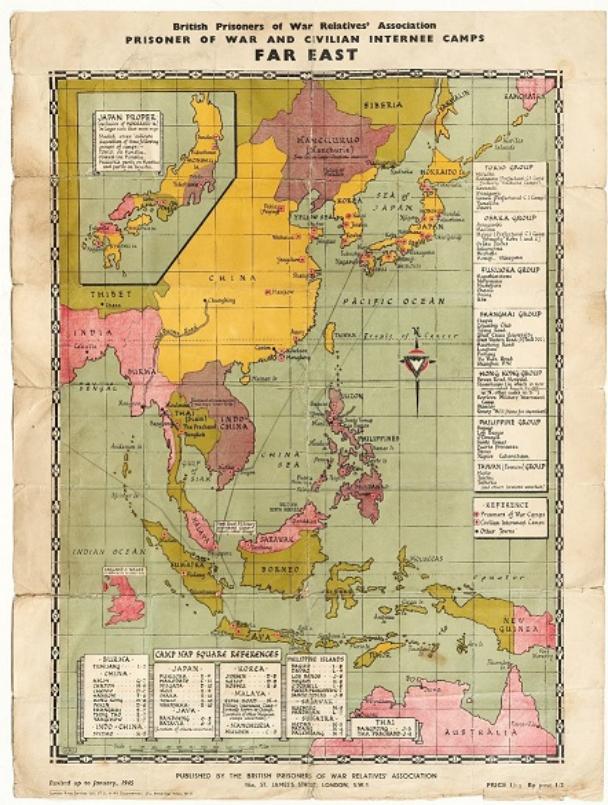
FEPOW and LSTM (Liverpool School of Tropical Medicine)
LSTM is the oldest such teaching institution in the world, founded in 1898. Its work with FEPOW forms the longest-running project in the School’s history, running for 75 years.
The initial focus was the clinical care of those FEPOW patients who presented to LSTM for medical help immediately post-war, many of whom lived in northern England and had disembarked at Liverpool docks. Some needed treatment for years.
Since 2000 LSTM’s focus has shifted to recording the medical history of this unique collaborative project. Over 65 FEPOW veterans were interviewed as part of LSTM’s Captive Memories oral history project.
Secret Art of Survival
The FEPOW art investigation began in 2012 sparked by Prof Geoff Gill and Meg Parkes’ academic research studies.
Their investigation has so far uncovered 69 artists, who have been classified as ‘unrecognised’ i.e. some had work in archives, but most were largely unknown outside of research. Forty of these artists are represented in the Secret Art of Survival exhibition. NB since it opened a further four “new” artists have come to light.
Below are the stories of 5 FEPOW men in their own words. They represent the experiences, skills and ingenuity FEPOW used in order to endure the harsh and deadly conditions of the camps and work parties.
You can read below about the men, students will learn more about these men in the role play activity.
1. Ronald John “Jack” Spittle
Aged 27, Private, Royal Army Medical Corps, from Buckinghamshire

• Known as Jack
• Sent as part of a specialist squad to Singapore to do anti-malarial work destroying mosquito breeding grounds
• Engaged to Sybil during the war. He saw her letters (very few of which got through) as his ‘salvation’
• Lived in huts and cramped barrack buildings
• Wrote about the types of diseases faced by those in the camps and lack of vitamins
2. Fergus Anckorn
Aged 23, Gunner, 135 Field Regiment, Royal Artillery, from Kent
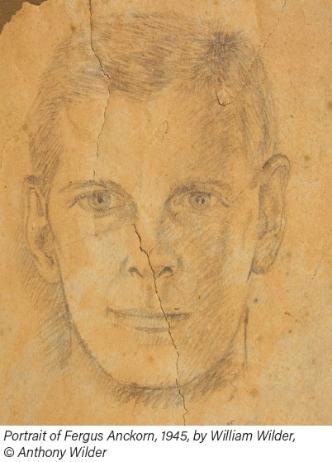
• Youngest member of the magic circle aged 17, oldest member when interviewed in 2007
• Survivor of the Alexandra Hospital Massacre, Singapore 1942, two days before the Fall of Singapore (15 February, when the majority of British servicemen were captured)
• Appeared in the final of ITV’s ‘Britain’s Got Talent’ in 2016, with the winner serviceman/magician Corporal Richard Jones
• Before he became a prisoner, Anckorn was injured during the Japanese bombing. His right hand was badly injured
• He also had a bullet in his kneecap
3. Derek Fogarty
Aged 19, Leading Aircraftsman, Royal Air Force, from Hampshire
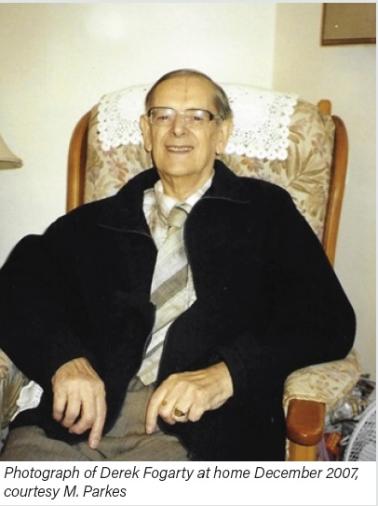
• Was blasted by an explosion and went deaf and numb on his right-hand side
• Had back problems from carrying earth
• Helped build an airfield on a coral island in the Moluccas
• He was later shipped to Sumatra to work on the jungle railway
• He believed that having a small group of friends saved his life
• As time went on he said food got more scarce
• Had a girlfriend at home
4. Captain David Arkush
Aged 27, Dental Officer, Royal Army, Dental Corps, from Inverness

• Qualified as a dentist at the University of Liverpool in 1937
• Sent to Singapore Island in 1940, worked in the army dental service at Nee Soon, assisting medical staff in hospitals in Singapore when the
Japanese invaded. He was sent to work in Thailand
• Prisoners kept a secret radio in some of the camps. This is how they heard news from home. Radios were run by batteries which they had to smuggle into camp. Occasionally medical staff
said they needed batteries for torches as there was no electricity and they used them in the radios
• There were two orchestras in Chungkai camp in Thailand
5. Nowell Peach
Aged 28, Flight Lieutenant and RAF medical officer, from Bristol
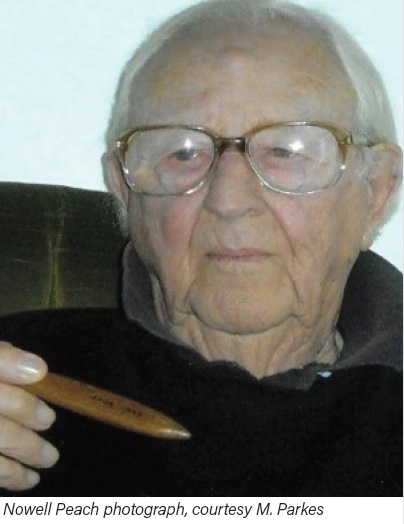
• Worked with the surgical team at the No. 1 Allied General Hospital in Java before the Dutch East Indies fell
• Made a small carving of a native women’s head out of wood at the start of his captivity
• Medical officers made vitamins from fermenting fruit
• Started to suffer with vitamin deficiency and his ankles started to swell up
• In one camp there were only three latrines (holes in the ground used as toilets) for thousands of prisoners and they had to queue up to use them
Activity 1 - What can the secret art tell us?
‘The Secret Art of Survival’ exhibition at the Victoria Gallery and Museum in Liverpool (October 2019 to March 2020) displayed a range of art works created in secrecy by British FEPOW.
Even though FEPOW knew they were forbidden to keep writing materials, or produce journals or make art, they were driven by an artistic urge or medical need, to record the unrelenting battle to survive. Their artwork depicted all aspects of FEPOW life, from the realities of living and working in extreme conditions, finding beauty and solace in the tropical flora and fauna, to morale-boosting cartoons. Artworks were kept hidden: rolled up inside bamboo tubes in walking sticks and artificial limbs, buried in bottles and tins under huts or with the dead.
The exhibition split the artwork into themes: the environment, camp life, medical ingenuity and survival.
Instructions:
The men faced many life-threatening issues and problems. Ask students to use worksheet 1 to answer the following
questions and write and/or draw what they discover from looking at some of the examples of the artwork on worksheet 2.
Ask the students:
• Can you find examples of the challenges the prisoners faced within the pictures?
Answers could include: The environment, work, weather, disease, isolation, food, lack of communication with home.
• Can you find what would help them survive within the pictures?
Think about:
The materials they had available
The types of skills the men had
The drawings themselves
The drawings were often hidden because the men knew they were forbidden to keep any records and would be punished if they were found.
• Where do you think they would hide the pictures to keep them secret?
Answer: One place the men hid the paintings was in the bamboo
Bamboo picture worksheet 3
Worksheet 1 - What can the secret art tell us?
The men faced many life-threatening issues and problems.
Write and draw your answers on Worksheet 1
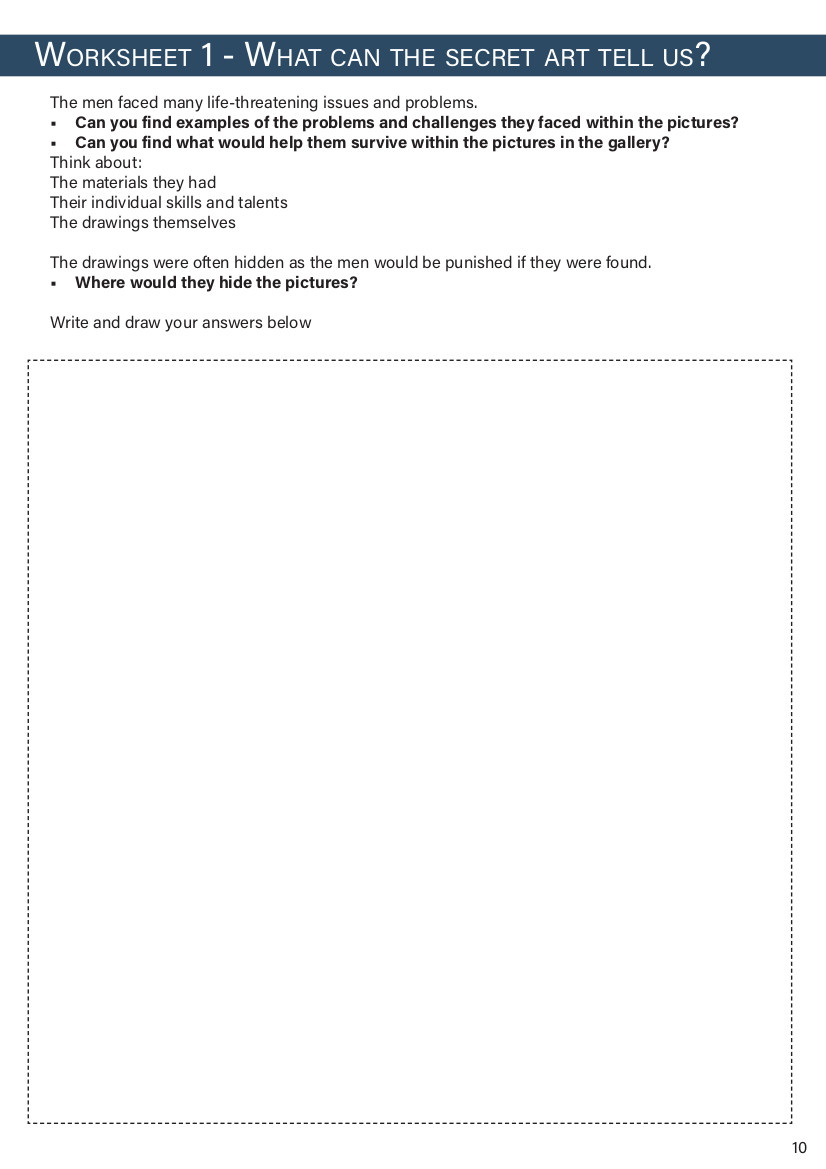
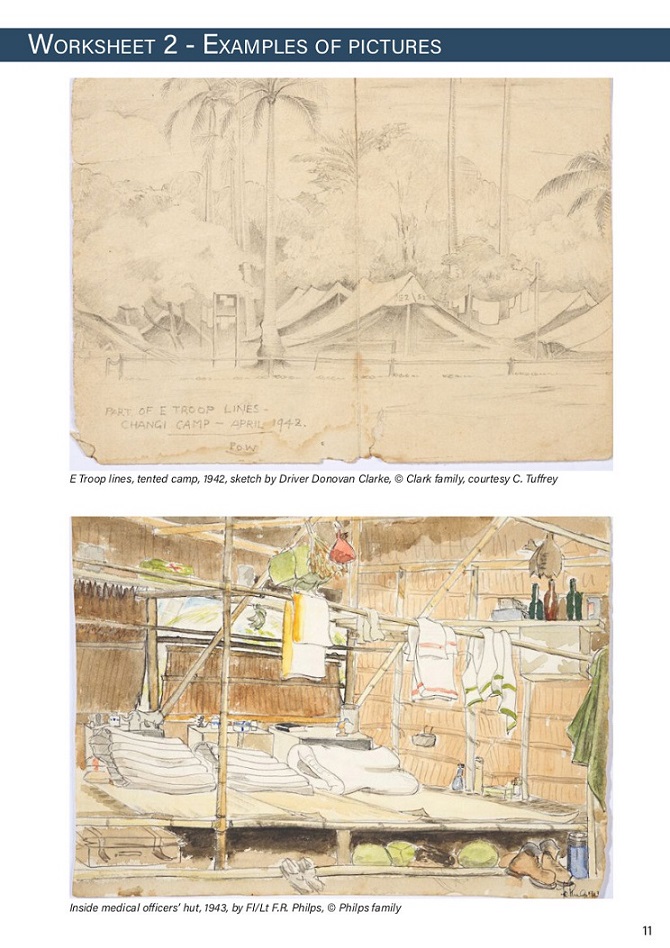
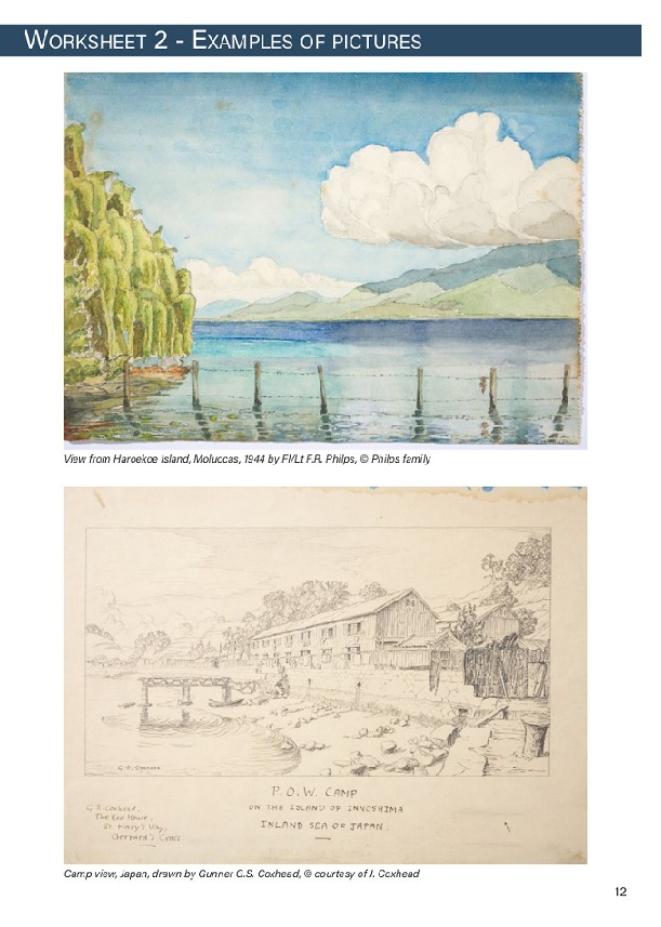
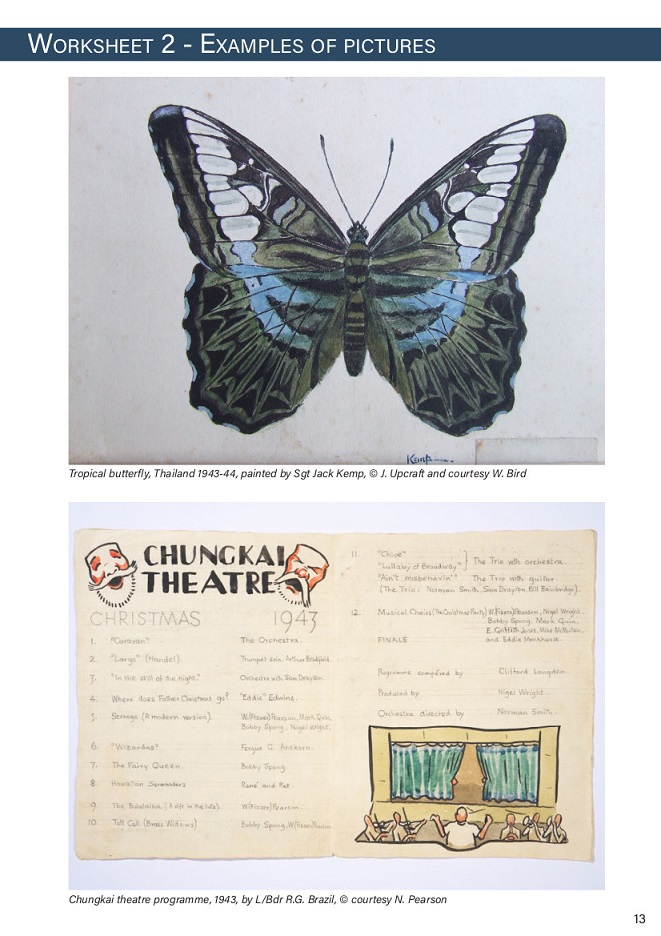
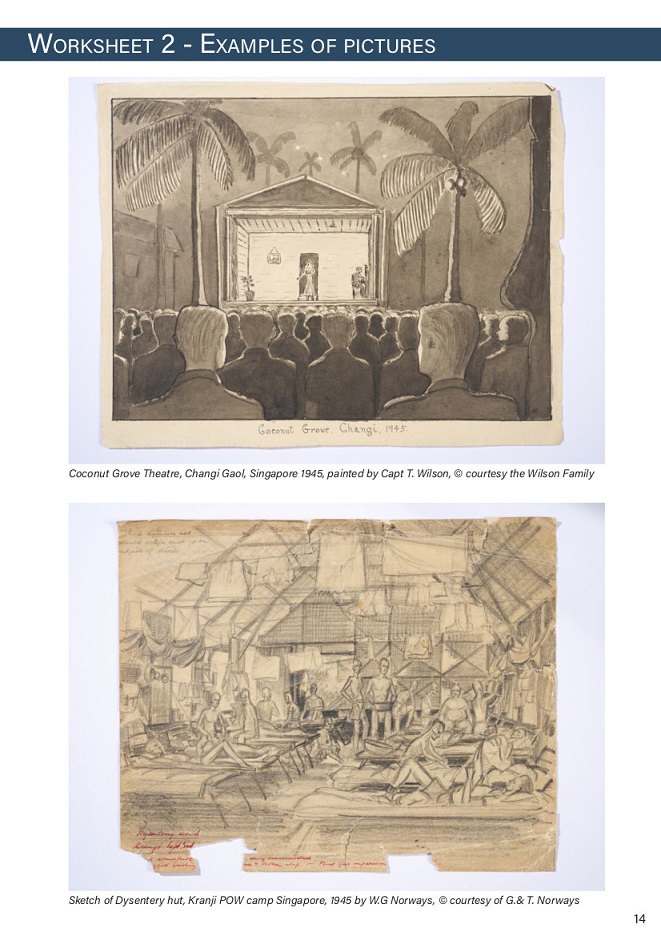
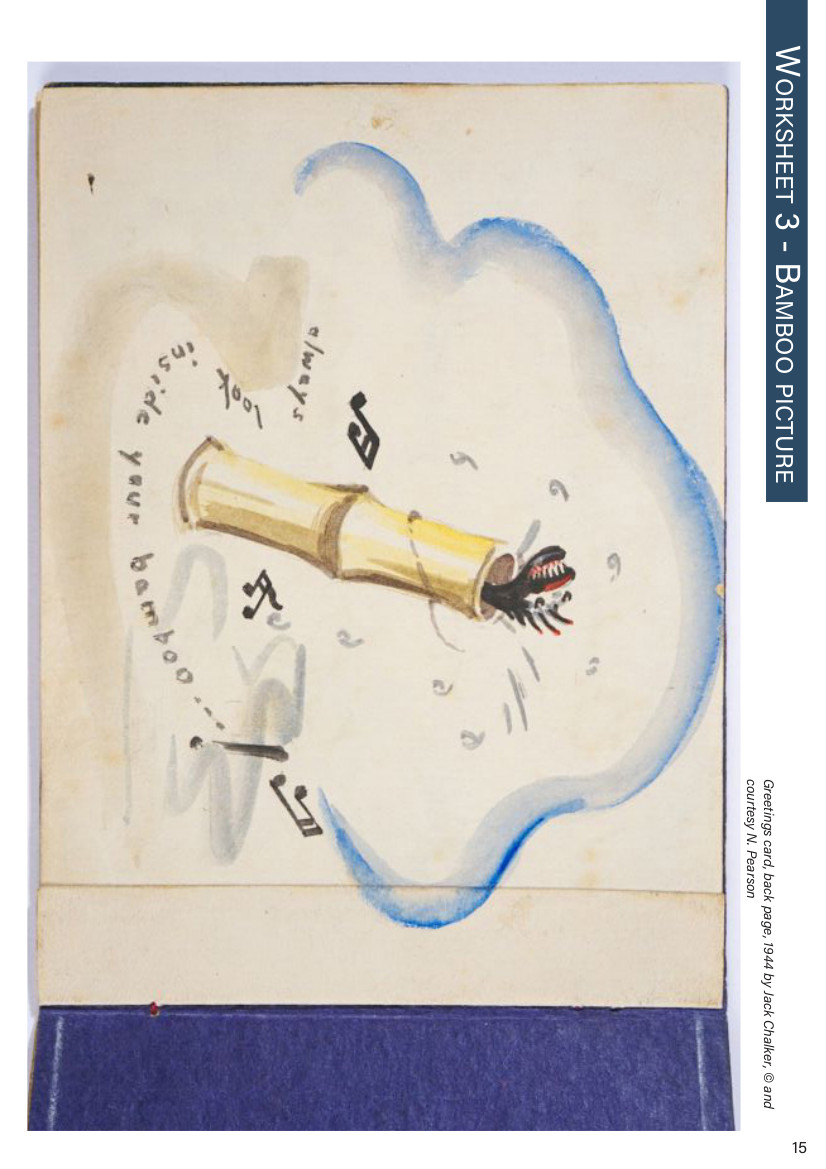
Activity 2 - Detective Challenge
The prisoners faced challenges that nothing could have prepared them for.
Instructions
Ask the students to use the evidence in worksheet 4 to list the types of challenges the prisoners faced.
Ask the students:
• What does the evidence tell you?
• What are the main challenges faced?
• How would you feel?
• What would you be worried about?
• What would be different from life at
home?
Students can record this on the detective evidence report on worksheet 5 or draw the camp and label it with the challenges.
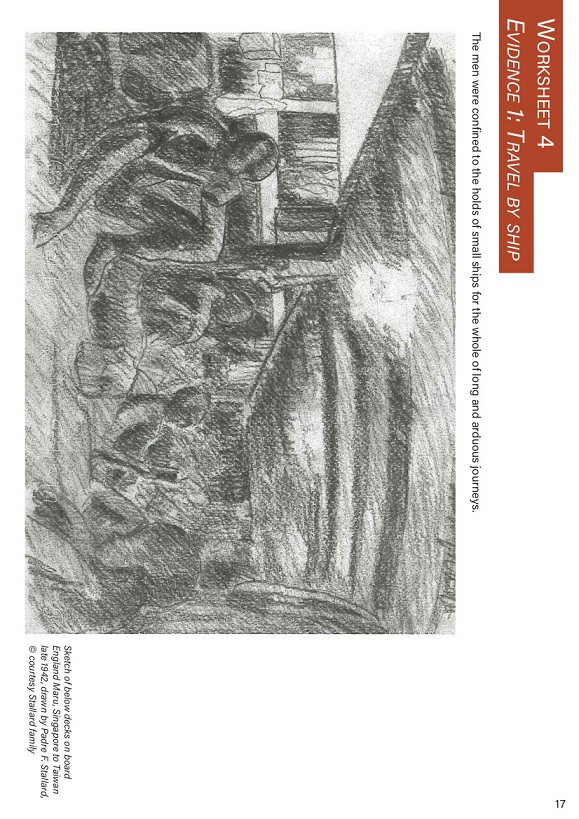
Worksheet 4
Evidence 2: Location
The men were put in prison camps in different locations. This could include the jungle, mines and industrial sites or in towns and cities.
Those prisoners whose camps were in the tropics would encounter: monkeys, snakes, water buffalo, wild boar, elephants, chickens, ducks, pigs and insects including flies, mosquitoes, butterflies (from the minute to the huge), spiders, red soldier ants, scorpions, snails, termites, beetles, lice and fleas.
Derek Fogarty
“A whole family of black scorpions fell out of what we’d touched…on this wagon, by the side of the road…”
“It was like jungle in the vicinity and there was this whole family of wild boar and it was there I learnt that whatever
else you do you don’t argue with wild boar because they’re the most ferocious animal in the jungle...I loved the animals and I loved to hear the monkeys.”
Fergus Anckorn
“And then I’d spend the rest of the day in the jungle on my own, looking at the creepy crawlies and the snakes and the
lovely flowers and things like that.”
Worksheet 4
Evidence 3: Food and rations
The men were not getting enough calories for the amount of work they were doing.
• They were not getting enough vitamins.
• The prisoners were sometimes able to supplement their rations by buying eggs, peanuts and
gula malacca (type of palm sugar made from the sap of flower buds from the coconut palm) but
the supplies were short and irregular.
• No additional or special rations were allowed by the Japanese for sick men.
Derek Fogarty
“Things got worse and worse…food was very short and where we didn’t have much rice and we used to have what
they called tapioca flour which they made...ongle balls, which was like unleavened bread and it was a dirty brown
colour.”
Fergus Anckorn
“I think we had 60 grams of rice a day and in some camps there were vegetables, if there was a buffalo that had been
killed, that went in the pot.”
David Arkush
“… a canteen in the camp and you could buy food there, you could buy a sort of meat stew, if you had money you
could do everything, and there was a tremendous amount of buying and selling.”
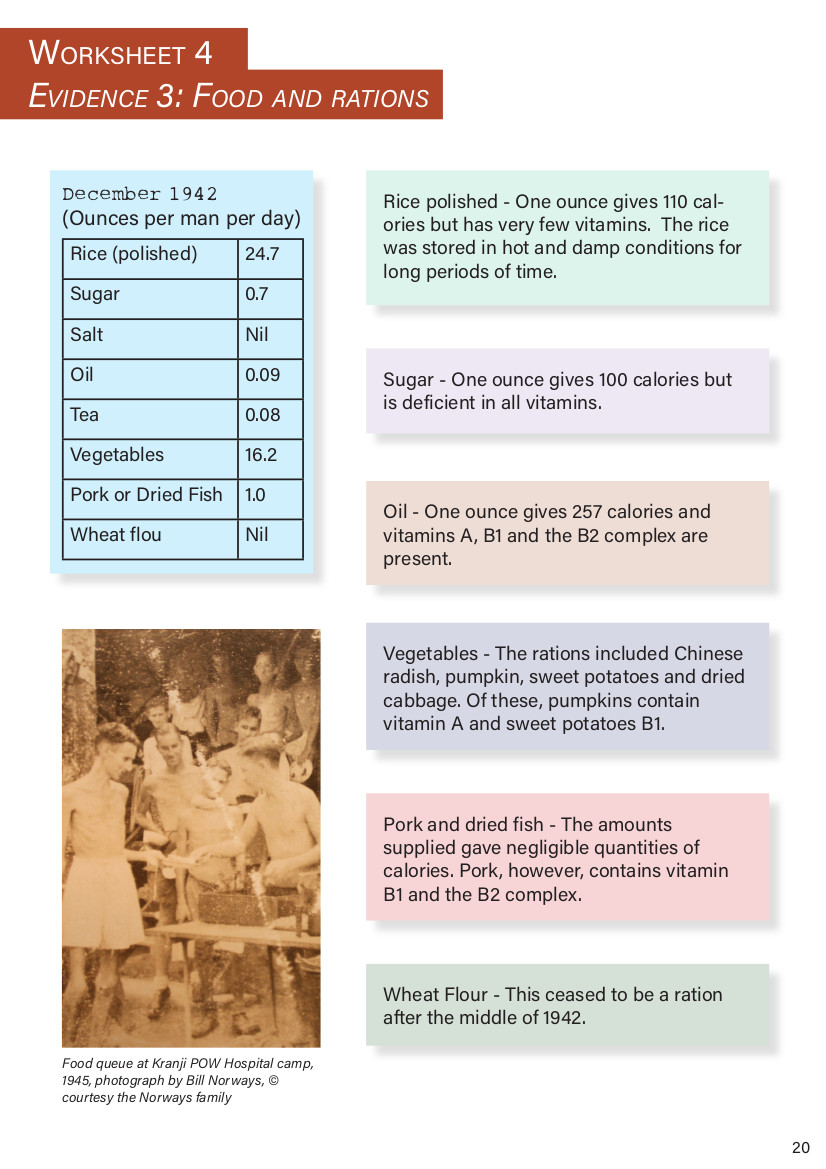
Worksheet 4
Evidence 4: Weather and heat
The quotes below describe some of the prisoners’ experiences with the weather.
Derek Fogarty
“And then you were walking from ice cold sand, which when it was wet it was ice cold, across white hot, red hot
sand where it’s in the sun I mean the temperature would be well over the hundred, y’know burning your feet.”
“We weren’t allowed jackets and we weren’t allowed hats, so it was pretty horrific heat-wise and horrific standing in
the wagon.”
Maurice Naylor
Aged 22, Gunner, 135 Field Regt from Manchester. He was captured in Singapore and was sent to work on the
Thai-Burma railway. Having trained as an administrator he volunteered to work for Lt Col. Toosey in the POW
camp office at Tamarkan camp in Thailand.
“We hardly got any equipment anyway, if we were lucky to still have a pair of boots that were usable. And all we wore
was a Jap Happy, a sort of loin cloth, and we got used to it, we acclimatized to it, it was very hot. Singapore is a very hot island; I mean it’s humid as well as being hot.”
“They’re hot countries so getting dry wasn’t really, normally a problem, soon as it stopped raining, you’d be ten minutes, quarter of an hour and you’d be dry again. And we only had shorts, and if you were lucky you…had a shirt.”
© LSTM FEPOW oral history interview with Maurice Naylor, 2009
Worksheet 4
Evidence 5: Disease
Common illnesses faced by the prisoners of war were:
• Dysentery
• Malaria
• Malnutrition – lack of vitamins
• Infectious diseases like cholera, tuberculosis, diphtheria
• Tropical ulcers
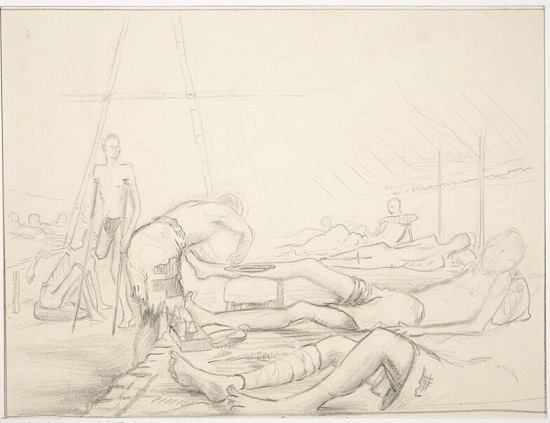
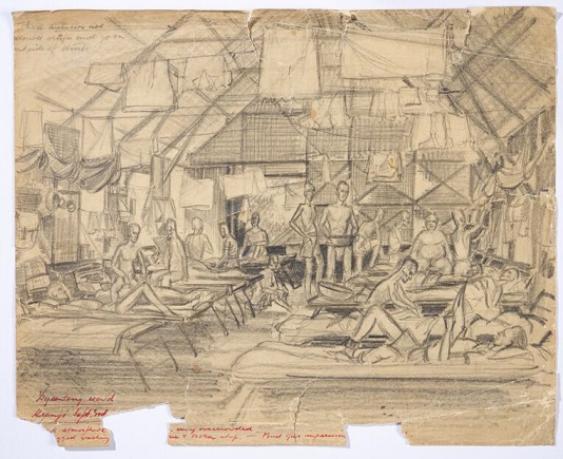

Activity 3 - Role play: How could the men help each other to survive?
Although the men faced extreme conditions and had to tackle many problems, each one of them had a range of different skills and abilities. Men became a team, ‘bands of brothers’, in small groups keeping each other alive, fed and safe. The information gathered by the Captive Memories oral history interviews has been used to create role play cards for five of the men.
Ask the students to take on the role of each of the five men using the role play cards in worksheet 6.
Ask the students:
• ‘Hot seat’ interview each man in turn and find out more about them. (Hot seating: A pupil takes on the role of
one of the men on the role play cards, answering questions as if they are that person using the information provided).
• Ask them to use the information they have found in Activity 2 to see which problems and challenges they can
tackle and overcome as a team.
Pupils could create their own questions or use some of the below:
• What is your name?
• How old were you when you were captured?
• Where are you from?
• What did you do in the army?
• What skills do you have?
• What are your strengths?
• How could these help us overcome the challenges we have found?
• What kept you going when you were a prisoner?
• What else can you tell us about yourself?
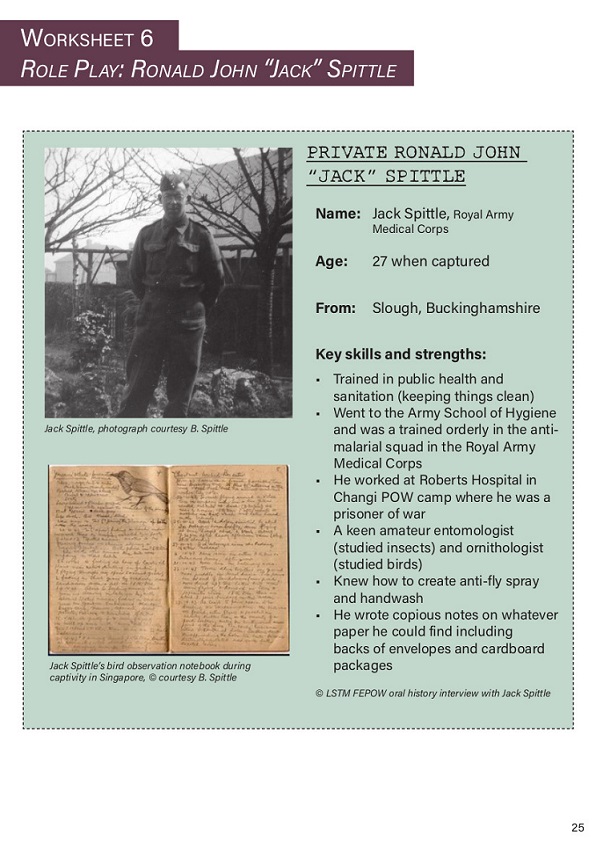
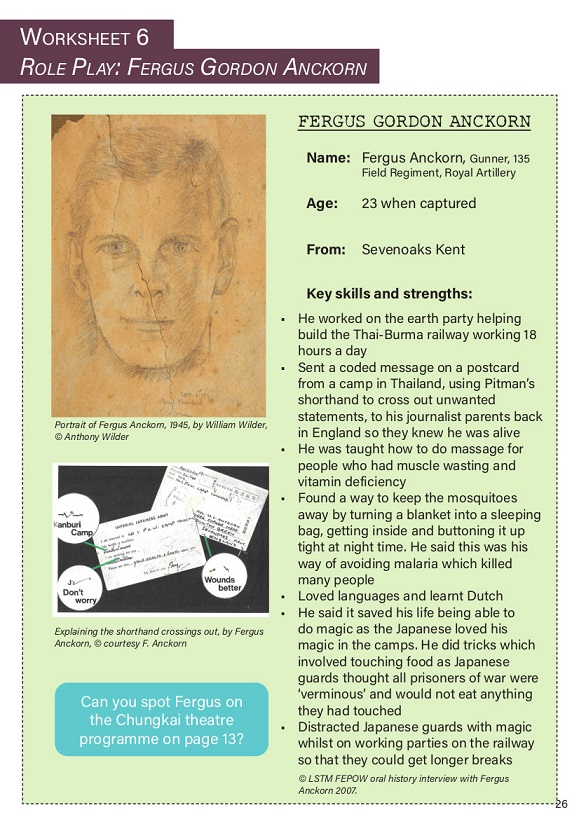
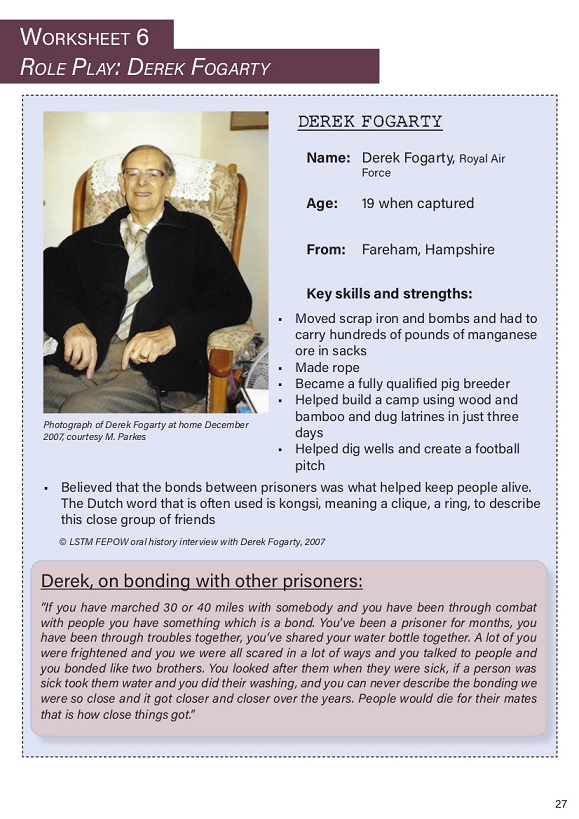
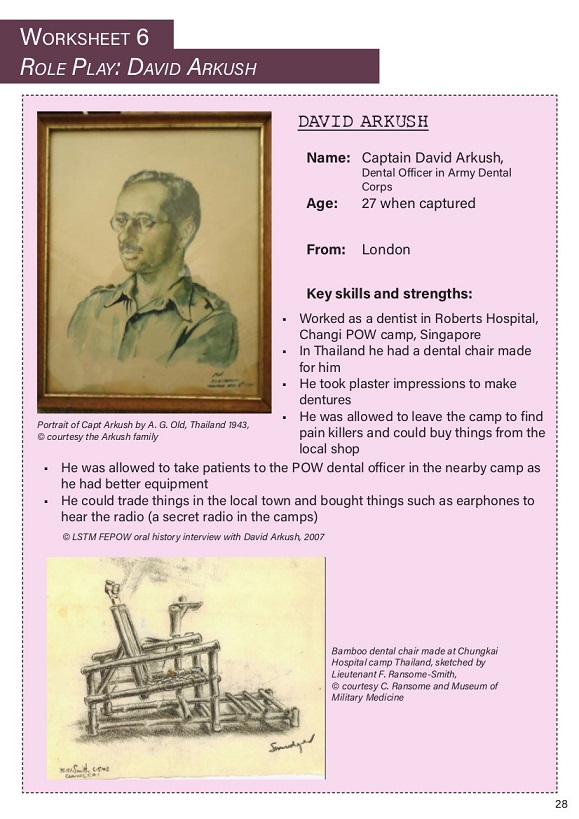
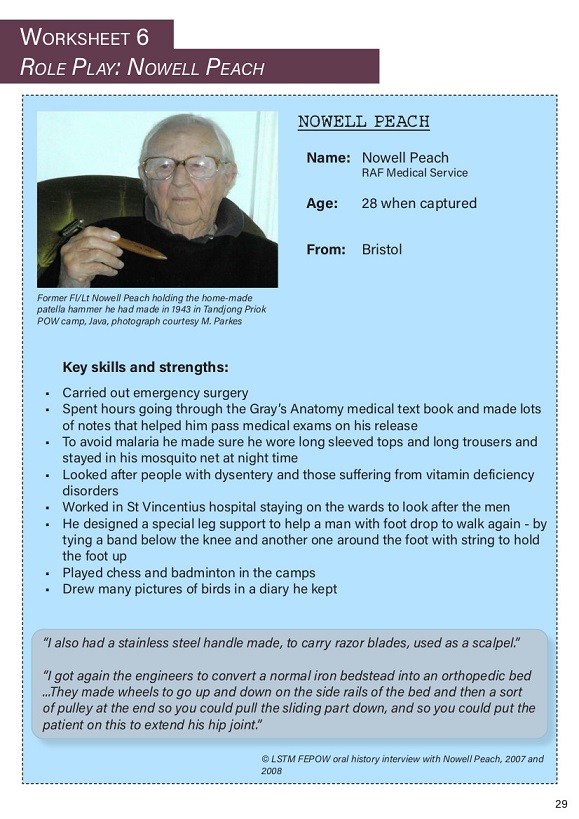
Activity 4 - Inventor challenge
The men in the camps had to be inventive when trying to solve certain problems. They only had the materials available to them in the camp to work with. For example, David Arkush had a dental chair made for him out of bamboo and tools such as Nowell Peach’s patella hammer were made out of the materials the men could find (worksheet 7).
Instructions
Imagine you only have the following materials:
• scrap wood, wire, broken razor blades
• string, rope, material from clothing
• latex tapped from rubber trees that could be used as a type of glue
• bamboo in various lengths
• kapok (a bit like cotton), the buds provided a fine silky material for stuffing pillows and pads for the injured/sick
(NB FEPOW did steal some work tools from the Japanese workshops)
How could you use these to solve the following problems?
1. Moving water from stream to camp
2. Cooking food
3. Keeping the sun off you
4. Keeping mosquitos off you
5. Moving bags of rice
6. Sleeping comfortably
• Draw your inventor blueprint labelling each part
• Pupils could try to make their own inventions
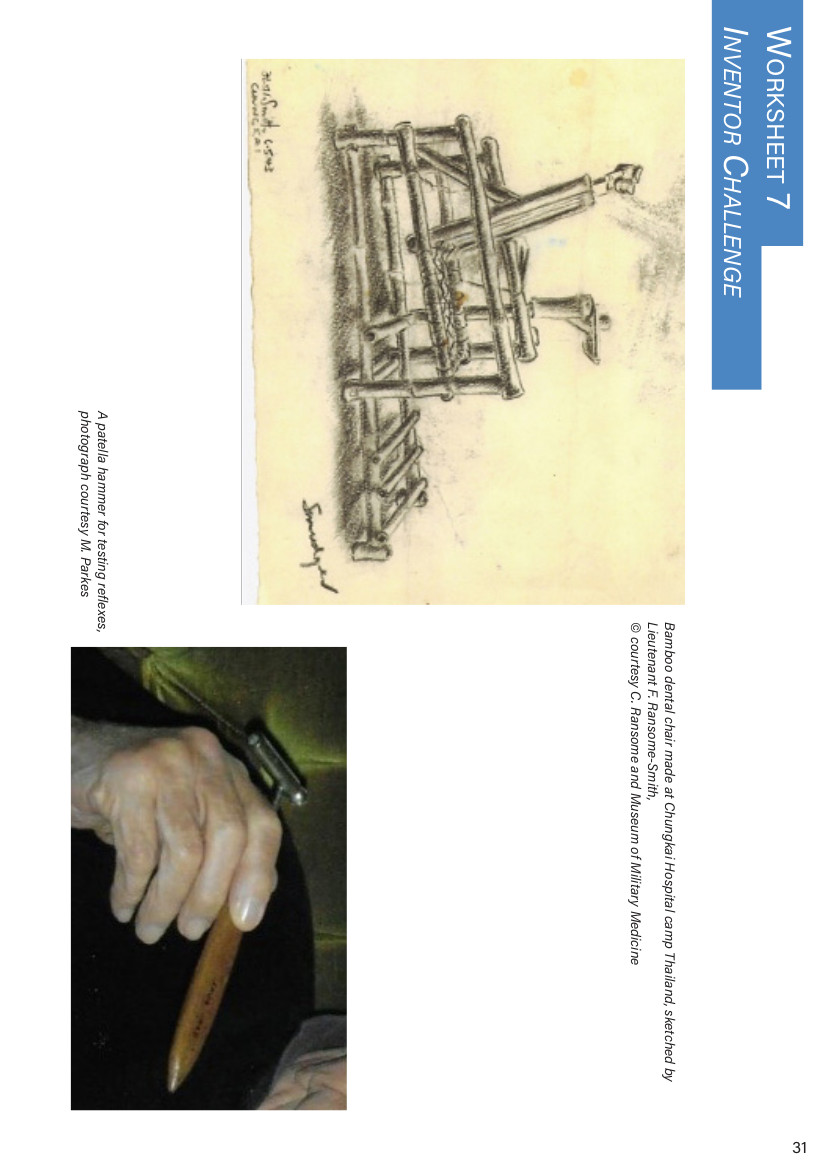
Activity 5 - Postcards home
The prisoners were occasionally allowed to write home. Often their postcards were not posted. Their words were censored.
Instructions
Ask the students to imagine they are writing a postcard to a member of their family from the prison camps.
They could write from the point of view of one of the men they have found out about.
Use the templates on worksheet 8.
They may only use 25 words for their message on each postcard.
• Postcard 1: Write a postcard home hiding the truth about life in the camps. (The prisoners were not
allowed to tell the truth)
• Postcard 2: Write a postcard home imaging you could tell the truth about life in the camps
Think about:
There is also a war at home. What would the prisoners be worrying about for their families?
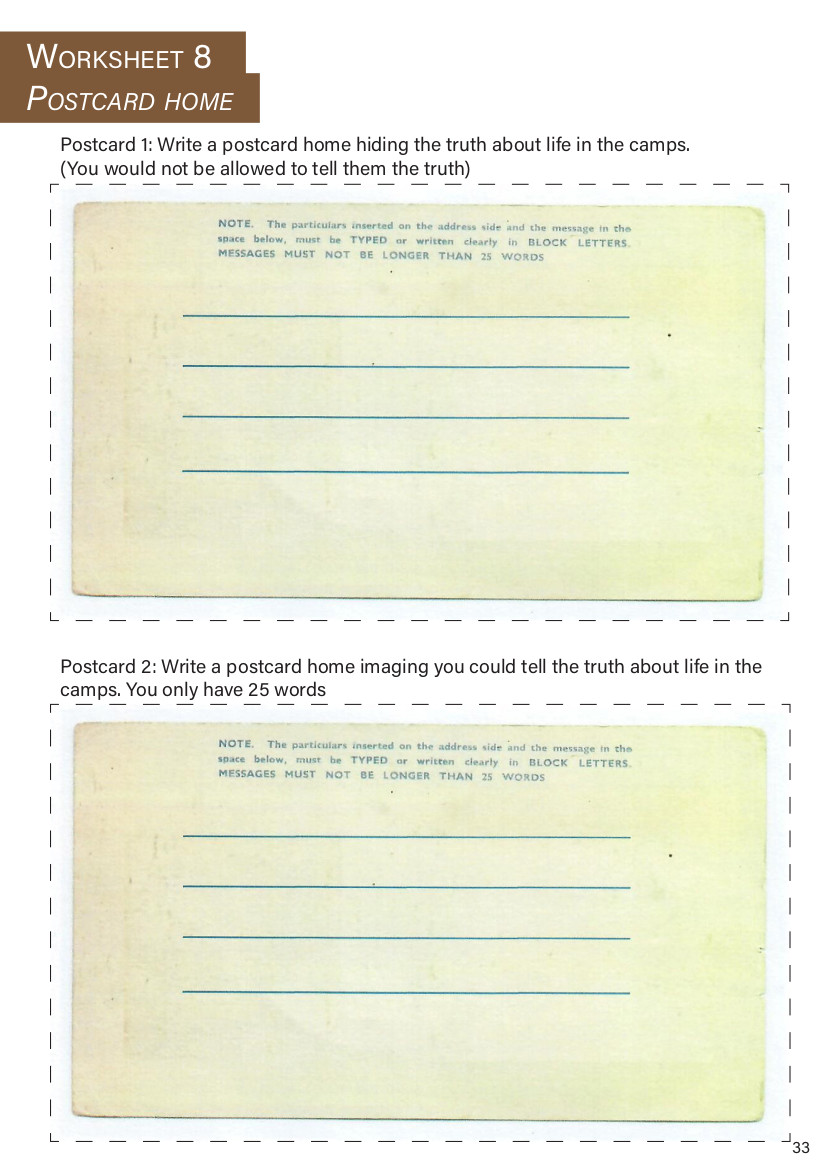
This resource was written and produced by Lorna Kernahan and designed by William Evers-Swindell for the Secret Art of Survival: Creativity and ingenuity of British Far Eastern Prisoners of War, 1942 - 1945.
lornaruthkernahan@gmail.com
This resource was written and produced by Lorna Kernahan and designed by William Evers-Swindell for the Secret Art of Survival: Creativity and ingenuity of British Far Eastern Prisoners of War, 1942 - 1945.
lornaruthkernahan@gmail.com